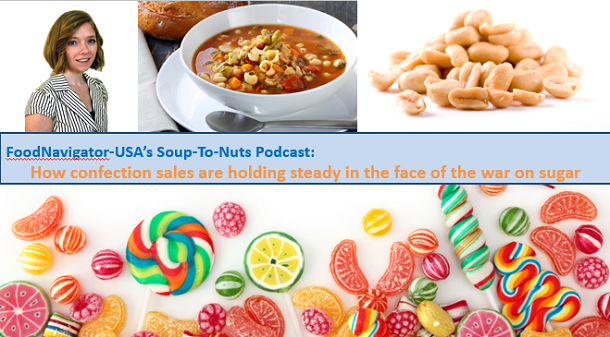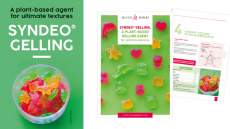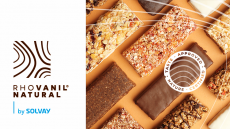Soup-to-Nuts Podcast: Confections hold steady in face of the war on sugar
This content item was originally published on www.foodnavigator-usa.com, a William Reed online publication.

While 1.2% may not seem like much, it is more than the 1% growth of total edibles, which IRI market research analyst Larry Levin says represent the total competitive landscape for confections.
He explains in this episode of FoodNavigator-USA’s Soup-To-Nuts podcast that much of this growth comes from non-chocolate chewy candy, which saw a 1.8% increase in household penetration in the last year. This represents an almost 2.5 million increase in the number of households buying non-chocolate chewy candy and translates to a $4.3 billion business compared to only $3.2 billion a few years ago.
“When you think about one point of penetration is worth about 1.2 or 1.3 million households, to grow your penetration by almost two points is really a fantastic effort by the non-chocolate chewy manufacturers,” he explained.
Another major driver in the confection category are small packages of chocolate, which grew faster their larger counterparts, Levin said. He explained that consumer desire to give chocolate contributed to a 3.4% year-over-year increase in chocolate packages 3-ounces and less, compared to larger packages which grew only 1.8% in the last year.
Chocolate also is growing as an ingredient outside of the candy aisle, and in doing so is driving pockets of growth in adjacent categories, such as cereal, which has been struggling, Levin said.
“Our data suggests that more than half of food and beverages actually contain chocolate and while the edible category is only up 1%, products that contain chocolate are up 2.5%,” he said.
Mints are another star in the confection category with sales up 7.3% in the last year, Levin said. He attributed this growth to consumer desire to keep their breath fresh – a concern that could be intensifying as more people eat-on-the go.
Notably, while mints are doing well, gum – which was the go-to breath-freshener of choice for years – is not.
“Gum continues to be a $2.5 billion business, but it is losing share,” Levin said. However, he added, he is closely watching innovations in the category by Perfetti and others that he thinks could create a “sticky situation for growth.”
Pressure mounts from adjacent categories
Confections not only face threats from the war on sugar and demand for healthy options, they also face mounting competitive pressure from adjacent categories, such as cookies and ice cream, Levin said.
“Cookies and ice cream together are almost a $20 billion business, but they are growing much faster than candy,” Levin said. “Cookies are growing at 2.6% and [represent] a $8.3 billion business, and ice cream is growing at almost 4% and is a $11.6 billion business.”
What this means for candy manufacturers is that they can’t focus only on the “tunnel of your aisle and category as your competition,” Levin said. “It is really important that manufacturers think much more broadly about their competitive set and really have the consumer demand moment in his or her mind as you are thinking about ways you want to activate consumers.”
Levin attributes the growth in cookies in part to innovation around thins, which give consumers permission to indulge in a cookie without having the same amount of calories that they might consume with a regular sized cookie.
This expansion outside of the candy aisle by consumers seeking to indulge, isn’t all bad for confectionery companies. Levin says it also is creating an opportunity for cross-marketing and reaching those consumers who might not shop the candy aisle.
Where consumers shop is evolving
Just as what consumers buy to satisfy their sweet tooth is changing, so too is where they buy it, Levin said.
In particular, he said, the confection sales at mass and convenience stores are increasing, while those at drug and club are falling.
“Consumers are leveraging both the opportunity to get in and out of dollar and convenience, and also leveraging the opportunity in mass” to buy sweets as part of a larger shopping trip for other food, he explained.
Levin also stressed that ecommerce is becoming an increasingly important sales channel for the confectionery industry. He explained that sales of food and beverage online right now is about $11 billion, but IRI data suggests it could grow to an $80 billion business by 2022. Of this, he said he expects sweets and snacks to capture about $2 billion.
In particular, he noted ecommerce offers a unique opportunity for confectionery companies that make mints and other “staples” to set up subscriptions which will guarantee future sales and reduce the risk of attrition related to competition.
“The other thing that is fascinating with omnichannel is that small manufacturers even the playing field with big manufacturers,” Levin said, explaining that smaller manufacturers are just as visible online as large, legacy brands, which may dominate shelf space in brick and mortar stores.





















